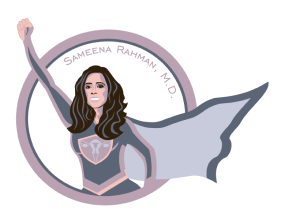
“ One- two- 1-2-3, 3-5 4….” Many of us from the Friends generation remember the episode when Monica Geller was trying to teach Chandler Bing about the erotogenic zones of women in pleasuring his new girlfriend. From pop culture to hard-core scientific research dating back to 1672 when Dutch gynecologist Ranier de Graaf discussed the female prostate and its role in female lubrication and fluid, the pleasure zones for women have remained elusive for centuries.
For many vulva owners, discussion around the G-spot has been frustrating. Depending on the study rates of female orgasm vary with up to 80% of heterosexual women being unable to achieve orgasm through vaginal penetration alone. This means that many partners have yet to find the Holy Grail and sometimes this results in frustration and relationship issues and can lead to a form of the female orgasmic disorder.
That being said, is it possible that trying to identify one automatic orgasm button has made the gendered orgasm gap wider than it should be? Is it possible both vulva owners and penis owners do not understand female anatomy and anatomical relationships enough to help achieve equality in orgasm? Years ago, Intimina, a Swedish women’s health company, conducted a study with 2000 women that demonstrated one-fourth of the women surveyed misidentified the vagina. So if we do not know our own anatomy, how can we help our partners solve the mystery.
And even more compelling is the fact that we, in the sexual medicine world, now have enough research to prove the age-old Grafenberg spot, isn’t one tiny location that if you can’t find you are outta luck.
There is a paradigm shift to re-think the spot into Grafenberg erotogenic zone!
So, it all started back in 1950 when the German physician Ernst Grafenberg, who is responsible for the modern-day IUD, also identified the female prostate–specifically an area along the anterior (top part ) vaginal wall that follows along the course of the urethra (the hole that you urinate from). He identified this area to be a source of pleasure and ejaculation from the urethra (squirt?). He thought the area was comprised of “fluid release”, “swelling” and a “pleasurable sensations”. Thirty-one years later, this area was termed G-spot by researchers Perry and Whipple and since then has been a heavily contested area of pleasure for vulva owners and their partners.

And now our understanding is evolving and changing and maybe it’s not an automatic magical button, but a zone (Amazing what you can learn when you actually fund research about female sexual medicine!).
The Grafenberg zone, as proposed by Dr. Irwin Goldstein et al in the SMR journal last month, is an erotogenic zone that is likely due to stimulating these regions:
- The area around the clitoral crura /corpora cavernosa gives pleasure sensation and swelling 2) the bulb of the clitoris(corpora spongiosa) also gives swelling and pleasure sensation
- The area around the urethra (periurethral tissue/prostate)–responsible for pleasure sensation and ejaculation
- The urethra itself (pleasure sensation)
- Anterior vaginal wall (top part of the vagina)–pleasure sensation and lubrication.
Now we know pleasure, lubrication, and swelling for vulva owners isn’t one spot but a generalized zone that may be easier to access, and with a little awareness from both partners, we can close the orgasm gap so more vulva owners can reach the fulfillment they deserve!
